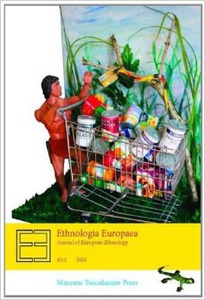RHN 21/2014 | Publication
During the last decades television shows have turned chefs into celebrities, and food and cooking have become an integrated part of the lifestyle and entertainment industries. At the same time food has scare-potential; food-related health problems and global food security are more prominent than ever, showing that anxieties, fears and hostility are as intimately connected with food as the joyful meal. These dynamics of late modern foodways lead to new or modified food products and services, as well as new habits and routines. New investigations of everyday food practices are thus in order: Why do people forage for berries in the forest or mobilize resources to find traditional cheese when cheaper varieties are easily available in the nearest supermarket? Why do consumers spend time in front of their computers chatting with the supplier of organic apples at the other end of the globe and how come that the seemingly trivial practice of eating cake in Norway has turned into an act of anxiety? By bringing such questions to the table, the articles in this issue of Ethnologia Europaea provide perspectives on the dynamics of contemporary food consumption and production and its effects and meanings in everyday life.
Contents:
Chef Celebrities, Foodstuff Anxieties and (Un)Happy Meals. An Introduction to Foodways Redux
Håkan Jönsson
pp. 5-16
Eduardo’s Apples. The Co-Production of Personalized Food Relationships
Jón Thór Pétursson
pp. 17-29
Strawberry Fields Forever? Foraging for the Changing Meaning of Wild Berries in Estonian Food Culture
Ester Bardone
pp. 30-46
The Property of Food. Geographical Indication, Slow Food, Genuino Clendestino and the Politics of Property
Fabio Mattioli
pp. 47-61
Cheese, Commons and Commerce. On the Politics and Practices of Branding Regional Food
Sarah May
pp. 62-77
Cake Is Hala, Fat Is Sinful. Cake and Representation in Norway
Runar Døving and Maja Garnaas Kielland
pp. 78
Source: H-Soz-u-Kult
